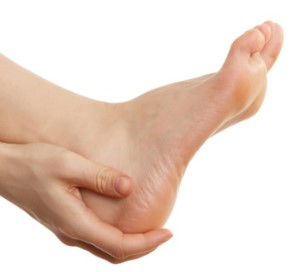Corns/Callus

Corns & Calluses
Corns and calluses are areas of hard, thickened skin that develop when the skin is exposed to excessive pressure or friction. They commonly occur on the feet and can cause pain and discomfort when you walk.
Corns
Corns are small circles of thick skin that usually develop on the tops and sides of toes or on the sole of the foot. However, they can occur anywhere.
Corns are often caused by:
- wearing shoes that fit poorly – shoes that are too loose can allow your foot to slide and rub
- certain shoe designs that place excessive pressure on an area of the foot – for example, high-heeled shoes can squeeze the toes
- corns often occur on bony feet as there's a lack of natural cushioning. They can also develop as a symptom of another foot problem, such as:
- a bunion – where the joint of the big toe sticks outwards as the big toe begins to point towards the other toes on the same foot
- hammer toe – where the toe is bent at the middle joint
Calluses
Calluses are hard, rough areas of skin that are often yellowish in colour. They can develop on the feet, usually around the heel area or on the skin under the ball of the foot. Calluses are larger than corns and don't have such a well-defined edge. As callused skin is thick, it's often less sensitive to touch than the surrounding skin. Calluses develop when the skin rubs against something, such as a bone, a shoe or the ground. They often form over the ball of your foot because this area takes most of your weight when you walk. Activities that put repeated pressure on the foot, such as running or walking barefoot, can cause calluses to form. Athletes are particularly susceptible to them. Other possible causes of calluses include:
- dry skin
- reduced fatty padding – elderly people have less fatty tissue in their skin
Treating corns and calluses
Don't put up with foot pain as if it's normal. Corns and calluses are a symptom of an underlying problem. They won't get better unless the cause of the pressure is removed. If the cause isn't removed, the skin could become thicker and more painful over time.
Preventing corns and calluses You can also help prevent corns and calluses by looking after your feet and choosing the right shoes to wear. Follow the advice below to help stop any hard dry skin developing:
Dry your feet thoroughly after washing them and apply a special moisturising foot cream (not body lotion). Use a pumice stone or foot file regularly to gently remove hard skin.
Wear comfortable footwear that fits properly. Always shop for shoes in the afternoon, because your feet swell as the day goes on. This means shoes that fit in the afternoon will be comfortable. You should be able to move your toes inside the shoe with a small gap between the front of the shoe and your longest toe. If possible, avoid wearing heels as they increase the pressure on the front of your feet.


